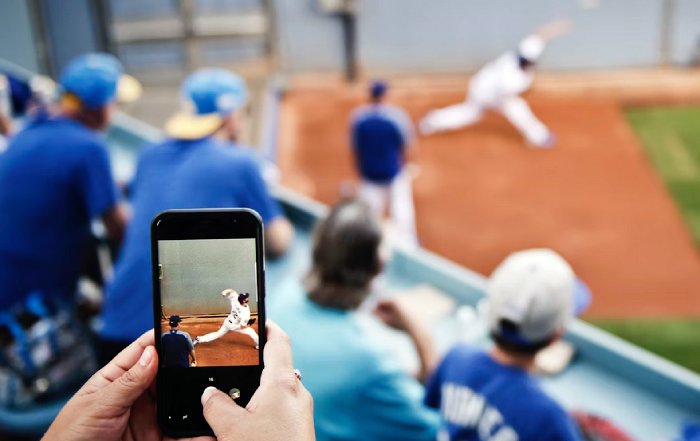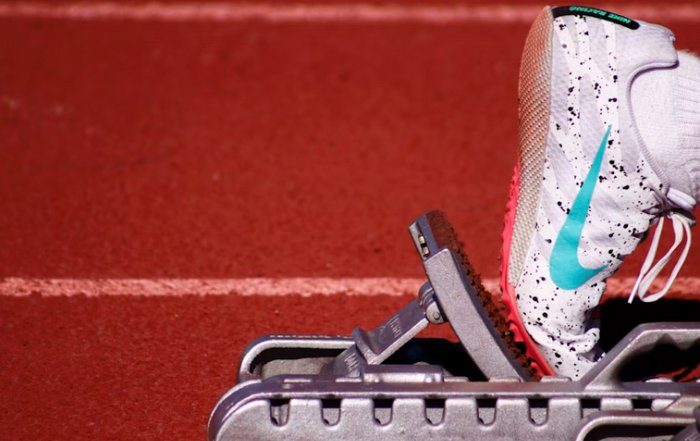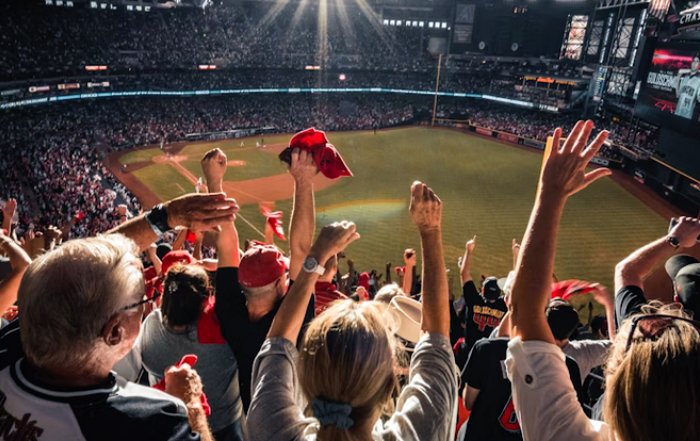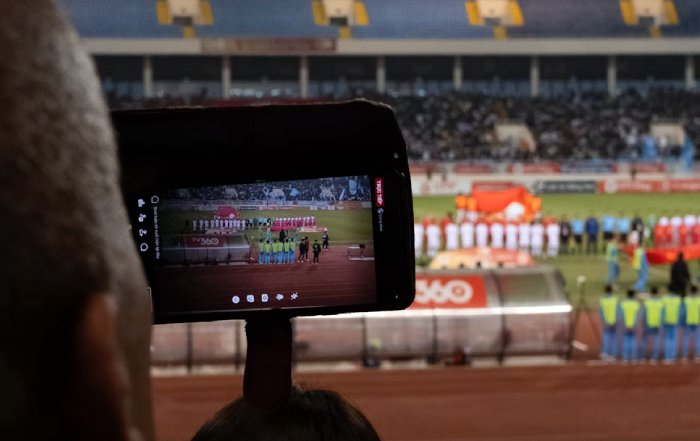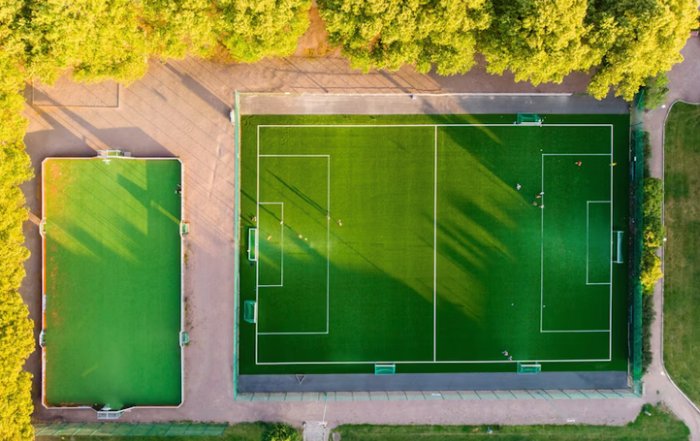Well the global sports industry clearly stands at the shift of technological acceleration, expanding digital ecosystems, and a rapidly evolving fan economy, where data has become the defining asset for competitive advantage. The rise of immersive analytics, real-time biometrics, artificial intelligence–driven insights, and cross-platform personalization has transformed how leagues, teams, federations, and brands build value. As the sports marketplace stretches across continents—from the burgeoning football markets of Asia to the tech-driven leagues of North America—organizations increasingly rely on sophisticated data strategies to deepen emotional connections with fans while unlocking new commercial pathways. Publications such as Sportsyncr have played an essential role in chronicling this transformation, offering a unique lens into how industry leaders leverage innovation to shape the future of athletic entertainment.
The evolution of sports data monetization reflects more than incremental improvements in statistical tracking or digital marketing; it represents a structural shift in how fans participate in the sporting world. Whether fans are reading about the latest performance science developments on Sportsyncr Health, exploring the cultural significance of global competitions on Sportsyncr Culture, or following the business implications of data partnerships on Sportsyncr Business, the appetite for knowledge and immersion continues to broaden.
In parallel, the landscape of fan engagement has expanded beyond venue walls, broadcast networks, and conventional media channels. As organizations such as FIFA, UEFA, the National Basketball Association (NBA), Major League Baseball (MLB), and the International Olympic Committee (IOC) adopt advanced technologies, they each contribute to creating a global marketplace where storytelling, analytics, and commercial strategy continually converge. Fans now expect seamless access to real-time events, meaningful personalization, and intuitive touchpoints, prompting the global industry to innovate at a pace previously unseen. To understand these shifts, it is essential to explore not only where the industry is today but where it is rapidly heading.
The Historical Foundations of Sports Data
Although sports statistics date back more than a century, particularly in markets such as the United States and the United Kingdom, the modern acceleration of data collection and usage emerged with the digital boom of the early 2000s. Traditionally, scorekeepers, journalists, and analysts relied on manual tracking methods. Baseball, through the influence of Bill James and the sabermetrics movement, helped ignite the early adoption of data-driven decision-making, a concept that later spread globally across multiple sports. This early period laid the groundwork for contemporary innovations that use artificial intelligence, biometric sensors, high-speed cameras, and cloud-based analytics. Today, major organizations such as Opta Sports, Stats Perform, and Catapult Sports apply methodologies that build on those foundational concepts.
As modern fans began consuming sports through digital devices, leagues recognized that the value of data extended beyond coaching and player development. Information became a commercial asset capable of generating new revenue streams through media partnerships, betting integrations, fantasy platforms, and interactive fan experiences. For example, readers following developments across global markets on Sportsyncr World have witnessed how national federations in Europe, Asia, and North America invest heavily in data technologies to enhance both their sporting competitiveness and their economic sustainability.
The transformation began accelerating roughly around 2010, with the rise of wearable technology and cloud computing. Professional teams in Germany, the United Kingdom, and Australia were among the first to experiment with GPS-enabled training devices, enabling performance metrics that had previously been impossible to capture. Today, organizations like WHOOP, Hawkeye Innovations, and Second Spectrum provide integrated analytical solutions that shape training decisions, risk management strategies, and commercial partnerships. As a result, the global sports ecosystem increasingly treats data not merely as a by-product of competition but as a core strategic asset.
The Explosion of Real-Time Performance Data
The collection of biometric and positional data in real time has revolutionized the experience for athletes, coaches, and fans alike. Leading football clubs in the English Premier League, La Liga, and the Bundesliga deploy multi-camera systems capable of capturing thousands of data points per second, enabling deeper analytical insights into movement patterns, fatigue levels, injury risks, and tactical scenarios. Fans often learn about such innovations through industry-focused content on platforms like Sportsyncr Sports, where the implications of real-time analytics are often explored in detail.
One of the most significant advancements has been the integration of artificial intelligence and machine learning into performance analysis. Tools such as predictive injury models, automated highlight generation, and adaptive player tracking have become essential components of elite sporting environments. The NBA’s long-standing partnership with Second Spectrum, for example, showcases the power of optical tracking technology to enhance both coaching and fan engagement. Visitors who want to explore how these emerging technologies transform the competitive landscape can learn more through resources such as MIT Sloan Sports Analytics Conference or insights published by McKinsey & Company, which frequently analyze sports technology trends.
While these innovations offer tremendous value, they also raise questions about data privacy, ethical usage, and player autonomy. Regulatory bodies across Europe, North America, and Asia have begun crafting policies to govern biometric data collection and usage, but global consensus remains elusive. Governing organizations such as FIFPro, the worldwide representative of professional football players, continue to advocate for balanced frameworks that protect athlete rights while enabling technological progress. Readers following industry news through Sportsyncr News often encounter discussions on how these frameworks might evolve.
Fan Engagement in an Ultra-Connected Global Landscape
At the center of sports commercialization in 2025 lies an increasingly demanding and globally connected fan base. Fans expect instant access to live events, multimedia content, interactive experiences, and authentic connections with athletes. This shift has been shaped in part by the rise of social media platforms, streaming networks, gaming environments, and global broadcasting partnerships. Organizations like Amazon Prime Video, Apple, ESPN, and DAZN have dramatically reshaped how fans watch and engage with live competitions, introducing new formats designed to attract younger and more digital-native audiences.
The second major influence has been the growing role of sports wagering in fan engagement. As sports betting becomes increasingly regulated and legalized across the United States, parts of Europe, and selected markets in Latin America, real-time data integration into betting platforms has created additional monetization opportunities. Major providers such as DraftKings, FanDuel, and Bet365 rely heavily on advanced data feeds to provide accurate, instant odds and deepen fan immersion. Fans around the world can learn more about the responsible integration of betting technologies through resources like UNESCO’s integrity guidelines or specialized research from global governance organizations.
The global sports experience has also expanded through interactive digital touchpoints such as augmented reality, virtual watch-parties, athlete-led digital content studios, and immersive fan metaverse environments. Younger audiences, particularly in countries such as South Korea, Japan, Singapore, Germany, the United Kingdom, and the United States, increasingly expect sports to be part of a broader digital entertainment ecosystem. For those exploring the intersection of sports and technology, Sportsyncr Technology provides ongoing coverage of emerging innovations shaping the global fan economy.
🌐 Global Sports Data Evolution
Interactive exploration of sports data monetization and fan engagement transformation
The Commercial Value of Sports Data in 2025
By 2025, the commercial landscape surrounding sports data has become one of the most dynamic segments within the broader global sports economy. As leagues, media partners, and brands expand their digital footprints, the demand for trusted, granular, and real-time information continues to surge. Market leaders such as Stats Perform, SportRadar, and Genius Sports have established themselves as essential infrastructure providers, supplying the streams of structured information that support everything from live broadcasts to fantasy sports ecosystems. Reports published by organizations such as the World Economic Forum reveal that the monetization potential of real-time sports analytics is expected to grow exponentially.
The strategic value of data extends far beyond simple access to statistics; it forms the backbone of broadcast enhancements, sponsorship activation, betting operations, and direct-to-consumer marketing channels. International sports organizations, including Formula 1, World Rugby, and the National Football League (NFL), have invested heavily in proprietary data platforms that allow them to classify, interpret, and distribute information in ways that strengthen their commercial leverage. Those exploring how brands navigate these dynamics can learn more through Sportsyncr Brands, where industry evaluations and sponsorship strategies are regularly examined.
At the heart of this growth lies a fundamental shift in fan expectations. Fans no longer want passive consumption; they prefer interactive, personalized, and context-rich experiences. As a result, leagues and media companies now treat data as a primary asset capable of attracting sponsors, enhancing broadcast value, and shaping loyalty programs.
Globalization and Local Market Adaptation
The commercial evolution of data-driven sports engagement does not unfold uniformly across regions. Different markets have adapted at varying speeds depending on cultural attitudes, technology adoption rates, regulatory environments, and local fan preferences.
The United States remains a dominant hub of high-performance sports analytics, driven by organizations like NFL, NBA, MLB, and technology partnerships with companies like Amazon Web Services (AWS). In Europe, regulatory structures such as GDPR shape ethical and transparent data usage, prompting football clubs like FC Barcelona, Manchester City, Bayern Munich, and Paris Saint-Germain to innovate while safeguarding privacy.
Asia is simultaneously forging a mobile-first sports ecosystem fueled by companies such as Tencent, Rakuten, and Naver, while Latin America and Africa are rapidly emerging as vibrant sports markets powered by improving digital access. Insights into these global shifts can be further explored through research provided by OECD and UNDP.
Sports Betting, Integrity, and the Role of Data
Sports betting has evolved into a global, data-intensive industry powering new economic opportunities while posing significant governance challenges. Companies such as Genius Sports and SportRadar play essential roles in delivering official, verified data to sportsbooks, helping ensure match integrity and responsible engagement. Major media outlets like Reuters Sports Business provide extensive reporting on the regulatory and ethical implications surrounding sports wagering.
As betting platforms expand globally, issues involving athlete data, match integrity, and consumer protection require stronger coordination. Bodies such as FIFPro and IBIA lead critical advocacy efforts, while transparency research from Transparency International helps contextualize integrity discussions across global industries.
The Rise of Direct-to-Consumer Sports Ecosystems
Sports organizations are increasingly bypassing traditional broadcasters to build direct-to-consumer (DTC) ecosystems such as NBA League Pass, NFL+, F1 TV, and MLB.TV. These platforms empower leagues to own the full data lifecycle and personalize content experiences in a way that strengthens fan loyalty and commercial influence.
Cloud infrastructure provided by companies like Google, Microsoft, and Adobe plays a critical role in enabling these dynamic ecosystems. Executive analysis of DTC business models is often enriched through industry insights published by Deloitte Sports. Meanwhile, fans exploring performance-driven connections between fitness and technology can find related resources at Sportsyncr Fitness.
Sponsorship Innovation Powered by Data Intelligence
Sponsorship strategies in 2025 emphasize measurable outcomes, behavioral analytics, and heightened audience insights. Brands like Coca-Cola, Nike, Adidas, Visa, and Emirates demand precise evaluations of how their partnerships influence consumer engagement across global markets. Data transparency supports trust, enhances negotiations, and promotes long-term collaboration. Industry leaders studying these developments often reference market analyses published by Forbes SportsMoney.
Digital sponsorship assets now extend far beyond traditional signage to include AR activations, personalized highlights, and predictive data overlays. More insights on this evolution can be found on Sportsyncr Sponsorship.
Esports, Gaming, and Cross-Platform Data Ecosystems
Esports has emerged as a powerhouse within global entertainment, generating unprecedented volumes of structured data. Games like League of Legends, Fortnite, Dota 2, and Valorant are redefining performance analytics and fan interactivity. Organizations such as Riot Games and Valve use real-time data visualizations to deepen engagement, particularly in markets like China, South Korea, and Europe. Fans interested in how gaming intersects with broader digital culture can explore coverage from The Verge’s gaming section and Sportsyncr Gaming.
Esports also influences traditional sports through hybrid events and content strategies. Properties like Formula 1, NBA, and FIFA now operate integrated digital ecosystems that merge athletic competition with gaming innovation.
Sustainability, Environment, and Data Accountability
Sports organizations are now leveraging data to measure and improve sustainability performance across venues, transportation logistics, broadcasting, and event management. Global entities such as World Athletics, Formula E, and the IOC have invested heavily in technologies that support environmental monitoring. Readers interested in sustainability trends can find related analysis on Sportsyncr Environment and through trusted institutions such as the International Energy Agency.
Smart stadiums in markets such as Germany, the United Kingdom, Japan, and Australia use IoT systems and digital twins to optimize energy consumption and waste management. These practices strengthen reputational trust and enable sports organizations to align with ESG priorities emphasized by companies like Cisco, Siemens, and Schneider Electric.
Global Workforce Evolution and the Emergence of Sports Data Careers
The global demand for sports data professionals has surged, expanding job opportunities across analytics, biomechanics, AI engineering, marketing science, and digital strategy. Fans exploring new roles can find market insights via Sportsyncr Jobs.
Universities worldwide have expanded analytics programs in partnership with organizations like IBM, Microsoft, and Google Cloud. Students are increasingly trained in machine learning, computer vision, and data ethics, as informed by research from institutions such as Stanford University.
Startup ecosystems across the United States, Europe, Asia, and Latin America continue to flourish, with venture capital flowing into athlete monitoring, injury-prevention science, fan analytics, and immersive technology.
Building Trust in an Expanding Data Ecosystem
With the accelerated use of biometric and personal data, privacy and trust have become central concerns. Organizations such as ISO, the Electronic Frontier Foundation, and the Future of Privacy Forum contribute to international standards promoting transparency and safety. Fans can explore these critical issues through trusted resources like EFF and related commentary on Sportsyncr News.
Athlete unions across the globe play a significant role in shaping protective governance models. Comprehensive international research from entities such as the Carnegie Endowment for International Peace helps analyze the geopolitical dimensions of data governance.
The Convergence of Sports, Technology, and Society
Sports increasingly intersect with health, culture, technology, and societal values. Wearables and performance analytics influence mainstream wellness, supported by insights available on Sportsyncr Health and Sportsyncr Fitness.
Digital storytelling and broadcasting networks such as BBC, CNN International, and Al Jazeera help connect sports culture across global communities. Research from organizations like UN Women provides insight into how sports can amplify conversations around equality and social development. Readers seeking deeper cultural analyses can explore Sportsyncr Culture.
Looking Ahead: The Future of Global Sports Data and Fan Engagement
Emerging technologies such as generative AI, spatial computing, and unified digital fan identities will shape the next decade of global sports innovation. AI-driven commentary, automated content creation, and hyper-personalized storytelling are becoming integral components of the sports experience. Executives frequently analyze these developments through insights from PwC.
Mixed reality, advanced viewer overlays, and connected stadium ecosystems are transforming venues worldwide. Early prototypes from institutions like MIT Media Lab illustrate how immersive fan engagement may evolve. Meanwhile, global policy organizations such as the World Economic Forum continue to evaluate the impact of cross-border digital infrastructure on sports innovation.
Wrapping Up: The Sportsyncr Perspective on a Transforming Global Industry
The evolution of sports data monetization and fan engagement represents one of the most significant shifts in the history of global athletics. What began as simple record-keeping has transformed into a global digital ecosystem that shapes commerce, technology, culture, and society. Across continents—from the United States, the United Kingdom, Germany, and Canada to South Africa, Brazil, Japan, and Singapore—fans are experiencing sports through more immersive, personalized, and interconnected channels than ever before.
As this transformation accelerates, Sportsyncr remains dedicated to offering an authoritative perspective on the innovations shaping the future of sports. Whether exploring international developments on Sportsyncr News, analyzing commercial strategies on Sportsyncr Business, or tracking technological disruption on Sportsyncr Technology, the platform continues to provide insights designed for a sophisticated, global audience.
Data is now the universal language of sport—connecting fans, empowering organizations, and redefining the way the world engages with athletic performance. As sports organizations navigate the challenges and opportunities of this new era, their success will depend on responsible leadership, strategic innovation, and an unwavering commitment to elevating the fan experience. With each new advancement, sports become not only more accessible but more meaningful, uniting global communities through shared stories of passion, performance, and progress.

